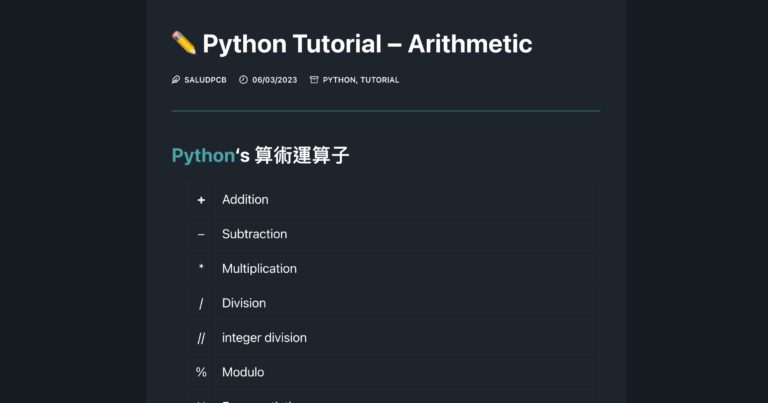Python Tutorial – Conversions
Contents
Python’s Data Conversions ✈️
In Python, conversions are common operations used to change the type or format of data. Here are some common conversion techniques to help you perform data conversions in Python:
| Data | int() ➜ Converts an object to an integer type. float() ➜ Converts an object to a floating-point type. |
| List | list() ➜ Converts a tuple, string, or set to a list. tuple() ➜ Convert a tuple, string or collection to a list. |
| String | str() ➜ Convert an object to a string type. |
| Eval | eval() ➜ Evaluates a string expression and returns the evaluated object. |
Data and String Conversion
Example
"""
conversions
"""
num = input('please enter a number:')
print(type(num))
print(type(int(num)))Result
please enter a number:101 ↩️
<class 'str'>
<class 'int'>Example
"""
conversions
"""
num = 101
stg = '101'
print(type(float(num)))
print(float(num))
print(float(stg))
print(type(str(stg)))
print(str(stg))Result
<class 'float'>
101.0
101.0
<class 'str'>
101List and Eval Conversions
Example
"""
conversions
"""
lst = [100, 200, 300]
tup = (100, 200, 300)
print(type(tuple(lst)))
print(tuple(lst))
print(type(list(tup)))
print(list(tup))
str1 = '1'
str2 = '1.1'
str3 = '[100, 200, 300]'
str4 = '(100, 200, 300)'
print(type(eval(str1)))
print(type(eval(str2)))
print(type(eval(str3)))
print(type(eval(str4)))
print(eval(str1))
print(eval(str2))
print(eval(str3))
print(eval(str4))Result
<class 'tuple'>
(100, 200, 300)
<class 'list'>
[100, 200, 300]
<class 'int'>
<class 'float'>
<class 'list'>
<class 'tuple'>
1
1.1
[100, 200, 300]
(100, 200, 300)








